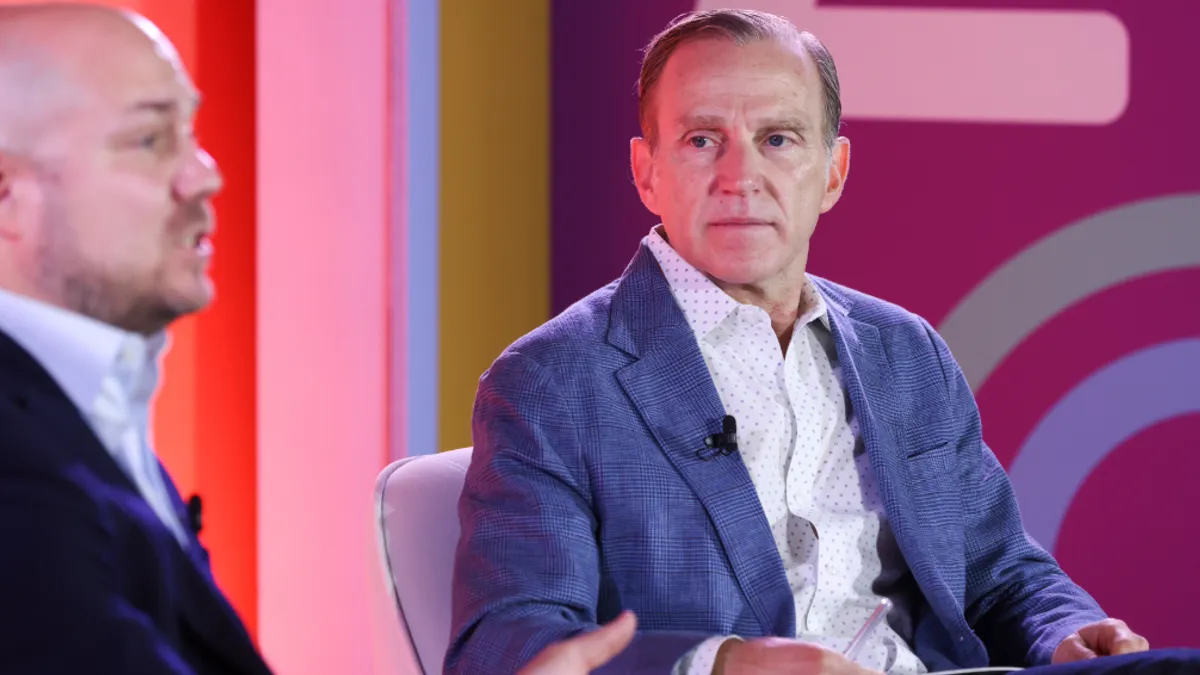NEW YORK — Diageo has significantly increased its investments in artificial intelligence (AI) for precision marketing, which has helped the company navigate challenges around regulation and generating return on investment (ROI), an executive said during an Advertising Week New York session on Tuesday. In addition to detailing the alcohol giant’s AI investments, panelists discussed how data and AI are closely related.
“We're currently building out our data capabilities, especially starting from marketing,” said Joshua Nafman, vice president, data and operations at Diageo. “How do we make better decisions? How do we drive down costs? How do we increase effectiveness?”
Nafman was joined by Mark Zagorski, CEO at DoubleVerify. The two discussed AI implementation, the tech’s place in brand safety and the growing importance of data for integrated marketing.
Addressing challenges
While nearly all advertisers face some sort of challenge when it comes to the digital marketing landscape, Diageo faces some challenges unique to the alcohol segment, including regulatory limitations surrounding where and who it can advertise to. The company needs to reach its market without appearing next to any content aimed at those below the legal consumption age for alcohol, a problem it refers to as inventory optionality.
“We can't market, and wouldn't want to market to anybody under the legal drinking age,” said Nafman. “So that means who we can communicate to and how we can do that…we're really challenged on that.”
Another challenge Diageo faces, like many other advertisers, is media inflation. More channels can lead to increased costs. At a time when marketing budgets face mounting pressure, figuring out how to cut costs, not raise them, is key. As marketing channels continue to splinter and diversify, that goal becomes more difficult to achieve.
A challenge specific to AI that Diageo had to address when implementing the new technology is the hype and expectation around AI, according to Nafman. Investing in technology can be extremely expensive. Data can be misused and end up not delivering the return expected of it.
“As soon as you touch data or AI, my expectation is that my media costs will actually skyrocket…my ROI just isn't there. And we've made a lot of mistakes doing this earlier on,” said Nafman.
Nafman’s comments underscore broader concerns that have arisen around AI, in that a lot of money has been invested in the technology so far and now the pressure is on to show that it can drive results for businesses.
Tangible returns
Despite early challenges and concerns with AI, Diageo has started to see significant returns when it comes to the technology, according to Nafman. These include increased ROIs and improved data efficiency. Specifically, the technology has allowed for hyper-specific targeting, allowing for very specific investments to be made. This is of special importance to Diageo, which has both affordable and premium products under its umbrella.
For example, Diageo could pinpoint a ZIP code inclined toward vodka. The company would then have to choose between promoting its more affordable option, Smirnoff, or its premium product, Kettle One. In some cases, the data may support choosing to focus on Kettle One in an area, as the brand has a higher profit margin, according to Nafman.
While much of the panel discussion focused on AI and data for marketing implementation, Diageo has also used the tech for buzzy consumer experiences. Earlier this year, the brand launched an activation in Edinburgh, Scotland, which allowed consumers to use AI to design their own Johnnie Walker Blue Label art and label.
Ultimately it comes down to how a company uses and visualizes its data. Once the technology has proven effective at cutting costs, marketers can take it one step further. Getting creative with data and AI can prove to have powerful results.
“If you think about Diageo as not a spirits company, but as a data company, we're probably one of the largest holders of alcohol data in the entire world,” said Nafman. “So then it goes, well, how can I put that to work?”














